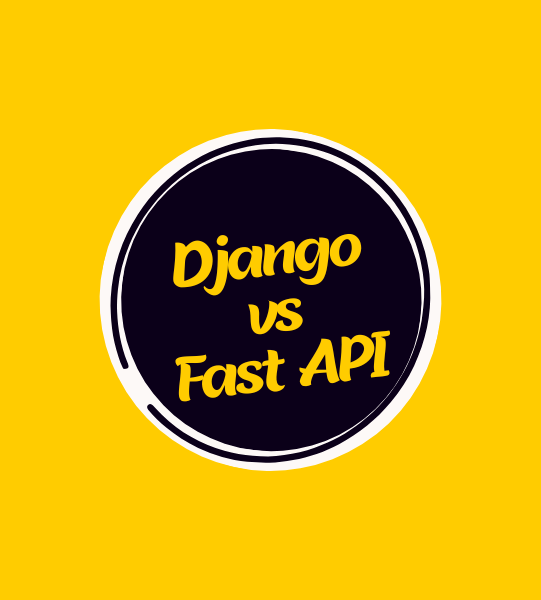
Django for a very long time was the new age web framework which most Python developers preferred. Launched in late 2004, it came as a breath of fresh air to Python developers struggling with Zope and Plone terse but still very efficient web frameworks.
While it had its own perception battles in the early days especially from Ruby on Rails fanatics and enterprise Java developers, it stood the test of time to emerge as one of the most popular web frameworks.
In the Python world, it had early competitors in Turbogears, Pylons Cherrypy, Tornado, Pyramid and Web2Py among others, Django was head and shoulders above rest because of its wider acceptance among Pythonistas for well over a decade.
While Flask did steal the thunder for a while in the decade following 2015, Django is still the world’s most popular web framework to write web applications.
FastAPI, relatively a new entrant, has however become the fastest growing among all Pythonic frameworks and has caught the imagination of Python developers.
It’s important to note that FASTAPI has been eating into market share of other frameworks like Flask more than taking mind share from Django developers, according to some opinions on Reddit.com
Let’s do a quick comparison between FAST API and Django.
Performance comparisons are sometimes unfair. A good developer (team) can ooze out maximum performance out of even the weakest frameworks. But that aside the common perception is that FASTAPI is many fold faster than Django.
Primary reason for that is that it’s built on Starlette and Pydantic, allowing it to handle asynchronous operations effectively, making it a very good choice for high-performance APIs.
Being a lighter framework of the two, FAST API has an edge on sheer raw performance. But then that was true of many other micro frameworks notable Bottle and Tornado in comparison with Django.
Another reason for perceived better performance is the fact that being a newer framework, FAST API has been faster to take advantage of some of the latest ideas, and also libraries which are faster notably those written in Rust.
|
Django
|
3/5
|
|
FAST API
|
3.5/5
|
This is a tricky choice. If you are only looking at creating APIs that are likely to be consumed by a mobile client or web front end application written in React or Angular, then FAST API is the easiest to learn.
Django on the other hand has a batteries included approach. It stems from the days when every web application was still monolithic. It’s extensive templating system might look terse to a beginner and is actually quite powerful for building quality web applications.
So if your goal is to build extensively complex web applications, learning Django will be worth the effort. I agree that for some people the learning curve might be steep, but for someone and especially those coming from
|
Django |
3.5/5 |
|
FAST API |
4/5 |
We consider this to be the most important aspect whenever you plan a project. How is easy is it to hire experienced developers in FAST API compared to Django?
FAST API has been mainstream for about 4 years only, while Django has a 20 year old legacy. So you are likely to find more Django Developers out there.
However it’s pretty easy for a Django developer to adapt to FAST API. Probably 2 weeks at the best.
And the community and ecosystem around Django is far larger than FAST API. Django is clear winner by a huge margin.
You are likely to find more answers on Django related questions on Stackoverflow. And yes, the AI tools are likely to answer Django related queries better.
A lightweight framework is often more flexible than an all-batteries included one. Here FAST API definitely has some advantages especially when use cases are relatively straightforward. However if the use cases are far more complex, Django outscores FAST API because of the sheer amount of options out there for all possible use cases.
Since Django 5.0, Django has bridged the gap on the flexibility front. Also there are several projects out there like micro Django, Django Ninja which allows developers to write applications that are more flexible and agile.
|
Django |
4/5 |
|
FAST API |
3/5 |
Both the frameworks are scalable on a very similar note especially after the release of Django 5.0. Both make great examples for running as Microservices and there are ready made templates for autoscaling architectures including Kubernetes.
You have examples of some very large applications like Instagram, Discqus, Clubhouse, Bitbucket, parts of Youtube, Spotify built on Django which stamps Django’s scalability values.
FAST API may not boast of similar names, but still is believed to be used by Airbnb, Microsoft, Zynga, Uber, Netifly among others.
|
Django |
4/5 |
|
FAST API |
4.5/5 |
Natively supports asynchronous programming, making it an excellent choice for applications that require high concurrency and real-time capabilities (e.g., chat applications, live data feeds).While Django introduced support for asynchronous views in recent versions, it is still doing a catch up act as far as the main trunk is concerned.
Again
Django-channels
,
Django-Ninja
, Pin push are examples of projects in Django which probably removes the edge that FAST API offers.
FAST API is Ideal for building high-performance APIs, microservices, and applications requiring asynchronous I/O operations. It’s also suitable for projects where performance and concurrency are critical.
Best suited for full-stack web applications, CMSs, and projects where a robust, all-in-one framework is beneficial. It excels in rapid development with its comprehensive set of tools and built-in features.
|
Django |
4/5 |
|
FAST API |
4.5/5 |